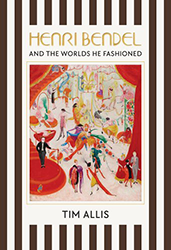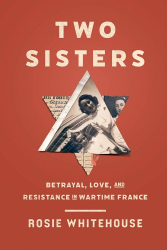War and fashion — sometimes these words are incongruous uttered in the same breath; other times they are melded together like two sides of a shiny French coin. And that’s just what they do in Miss Dior, the glittery new book by British journalist Justine Picardie that tells the story of Catherine and Christian, two siblings whose lives couldn’t be more different, yet whose hearts stay connected through chaos, conflict, and couture.
The name Christian Dior resonates loudly, as he was one of the most wildly popular fashion designers of the post-war world. However, his younger sister Catherine Dior is known only by those who frequented her modest flower shop and learned that she was the inspiration for her brother’s signature, rose-scented creation, a perfume he named after her.
This is because Catherine’s story has never been told. At least not until now, when Picardie delved into family archives, exhumed old historical documents, and studied the diaries and memoirs of people who knew the quietly courageous, soft-spoken, elusive woman. Picardie found so much rich material that the book reads like a colorful novel, moving from the macabre to the ethereal and presenting us with a steep wall of contrasts between Catherine and Christian, a wall that we can’t fail to enjoy climbing as we try to understand each of them individually and gain a firm grasp on their relationship.
For example, both loved gardening and adored the roses that grew in profusion throughout the family’s farmland. Yet after the fall of France in 1940, while Christian concentrated on creating his escapist costume ideas and honed his couture skills, Catherine became involved with a Resistance fighter who brought her into the movement.
Christian’s life of beauty and romantic vision — and his ability to stay out of trouble — contrasted sharply with Catherine’s work gathering information on the movement of German troops and warships and transmitting it to British intelligence services. Their lives diverged even more sharply when she was captured by the Gestapo and imprisoned in Ravensbruck and then a series of labor camps and finally forced to endure one of the infamous death marches of 1945.
As we learn about Catherine and Christian’s individual challenges, we also become starkly aware of the duality of occupied France, with Parisian couture palaces on one side and Nazi concentration camps on the other, often with the two intermingling, with a profit motive in the mix. The book is a history of the war and French politics of the time, but also a study of fashion. The many photos of dresses designed during the period and the celebrities who wore them bring some needed charm and color to the story.
Picardie is well suited to write this book. A fashion historian, British novelist, and memoirist who lives in London, she is also the former editor-in-chief of the British editions of Harper’s Bazaar and Town & Country, and served as the features editor of British Vogue. In addition, she is the author of several books.
Although a clear picture of Catherine remains shadowy throughout the book, we do get a sharp sense of her courage and her strong spirit, plus her deep belief in the work of the Resistance, and we find ample evidence in the text that she was nothing short of a woman of steel. Despite the fact that she is known because a perfume was named after her, it is clear from the words of the other women captured by the Nazis and incarcerated with her that her true legacy is her faith in her own abilities when faced with the unimaginable evil she witnessed in occupied France.
Linda F. Burghardt is a New York-based journalist and author who has contributed commentary, breaking news, and features to major newspapers across the U.S., in addition to having three non-fiction books published. She writes frequently on Jewish topics and is now serving as Scholar-in-Residence at the Holocaust Memorial & Tolerance Center of Nassau County.





